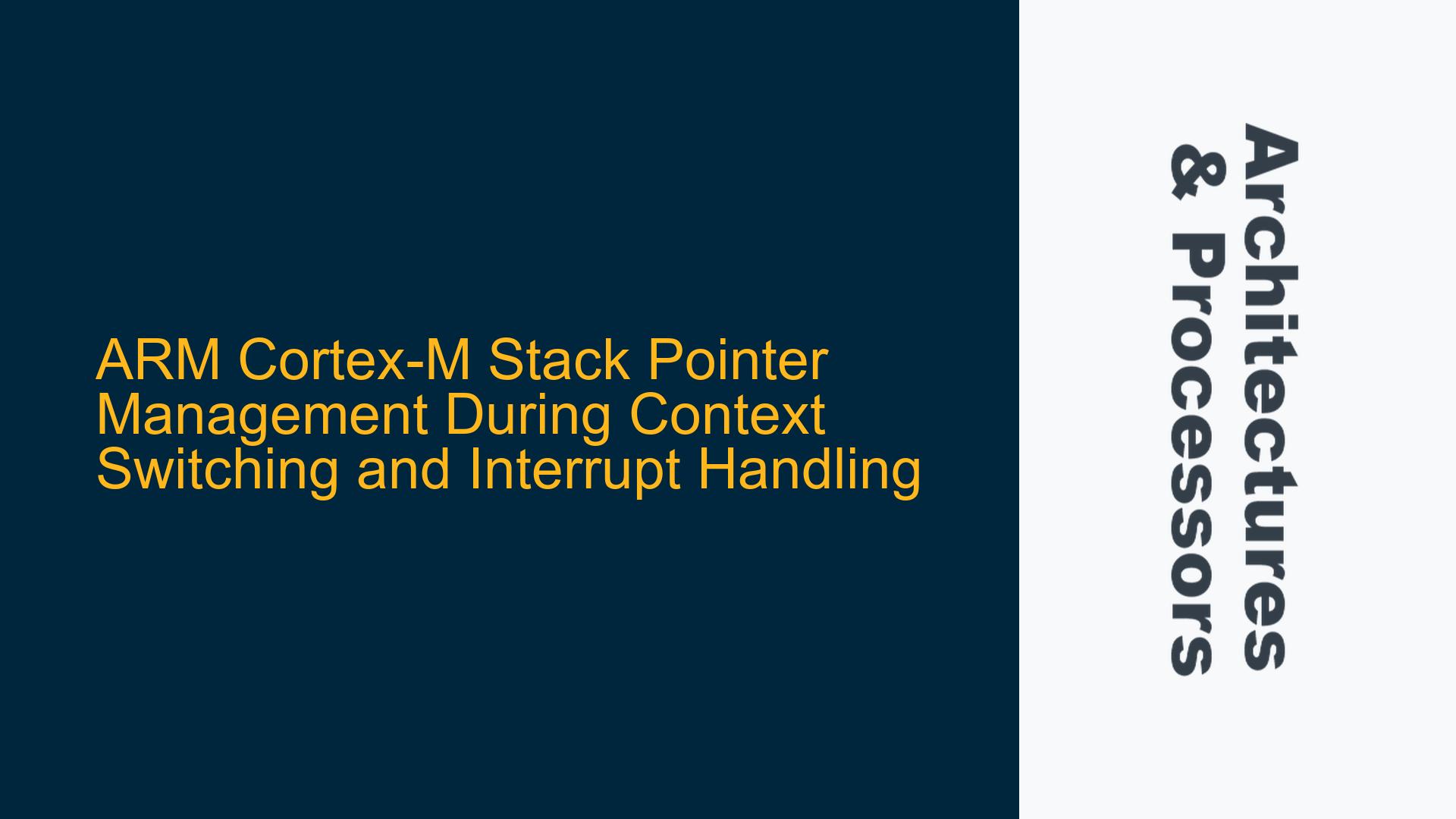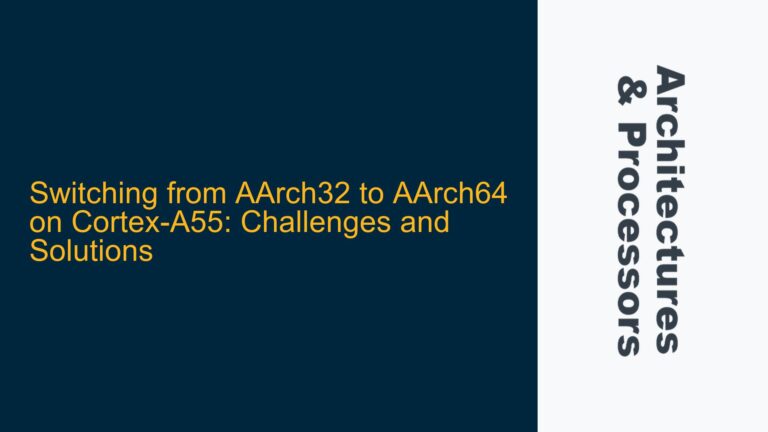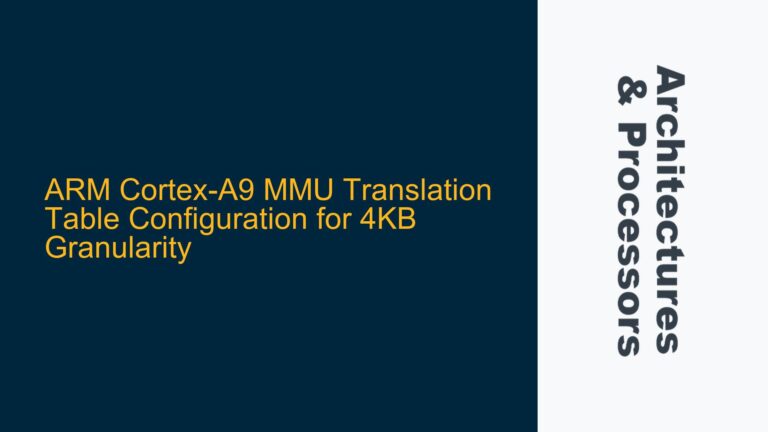ARM Cortex-M Dual Stack Pointer Architecture and Context Switching Challenges
The ARM Cortex-M architecture employs a dual stack pointer mechanism, utilizing both the Main Stack Pointer (MSP) and the Process Stack Pointer (PSP). This design is pivotal for separating kernel and user tasks, enhancing system reliability and security. The MSP is typically used for exception handling and privileged operations, while the PSP is employed for user tasks. However, managing these stack pointers during context switching and interrupt handling introduces complexities, particularly when interrupts occur during task execution.
In a typical OS-like system, the scheduler operates using the MSP, while user tasks utilize the PSP. This separation ensures that the kernel maintains control over critical operations, and user tasks are isolated from the kernel’s stack. However, when interrupts are introduced, the system must decide which stack pointer to use for interrupt handling. By default, the Cortex-M processor uses the MSP for exception handling, including interrupts. This behavior can conflict with the desired stack separation, especially if the interrupt occurs while a user task is running and the PSP is active.
The challenge arises when the system needs to maintain stack separation even during interrupt handling. If the MSP is used for interrupts, the kernel’s stack may grow unpredictably, especially in systems with frequent interrupts. Conversely, if the PSP is used for interrupts, the system must ensure that the interrupt handler does not corrupt the user task’s stack. This dual-stack management becomes even more complex when context switching is involved, as the system must save and restore the stack pointers and task contexts correctly.
Misconfigured Stack Pointer Selection and Interrupt Stack Management
One of the primary causes of stack management issues in ARM Cortex-M systems is the misconfiguration of stack pointer selection during interrupt handling. By default, the Cortex-M processor uses the MSP for exception handling, including interrupts. However, this behavior can be modified by setting the CONTROL register’s SPSEL bit. If the SPSEL bit is set to 1, the processor will use the PSP for exception handling. This configuration is often overlooked or incorrectly implemented, leading to stack corruption or unexpected behavior.
Another common issue is the improper handling of stack pointers during context switching. When a context switch occurs, the system must save the current task’s context, including the stack pointer, and restore the context of the next task. If the stack pointer is not correctly saved or restored, the system may experience stack corruption, leading to unpredictable behavior or system crashes. This issue is exacerbated when interrupts occur during context switching, as the system must ensure that the interrupt handler uses the correct stack pointer and does not interfere with the context switch process.
Additionally, the system must manage the stack space for both the MSP and PSP effectively. If the stack space is insufficient, the system may experience stack overflow, leading to memory corruption and system instability. This issue is particularly critical in systems with limited memory resources, where stack space must be carefully allocated and managed.
Implementing Dual Stack Pointer Management and Interrupt Handling Strategies
To address the challenges of dual stack pointer management and interrupt handling in ARM Cortex-M systems, several strategies can be employed. First, the system must correctly configure the stack pointer selection during interrupt handling. This can be achieved by setting the SPSEL bit in the CONTROL register to use the PSP for exception handling. However, this configuration must be carefully managed to ensure that the interrupt handler does not corrupt the user task’s stack.
One effective approach is to use a separate stack for interrupt handling. This can be achieved by configuring the MSP to handle exceptions and interrupts, while the PSP is used for user tasks. During interrupt handling, the system can switch to the MSP to ensure that the interrupt handler operates on a separate stack. This approach requires careful management of the stack pointers during context switching and interrupt handling to ensure that the correct stack pointer is used at all times.
Another strategy is to implement stack overflow protection mechanisms. This can be achieved by configuring the Memory Protection Unit (MPU) to protect the stack regions for both the MSP and PSP. The MPU can be used to define memory regions for the stack and set access permissions to prevent stack overflow and memory corruption. This approach requires careful configuration of the MPU and may involve additional overhead, but it can significantly enhance system reliability and stability.
In addition to stack pointer management, the system must implement effective context switching mechanisms. This involves saving the current task’s context, including the stack pointer, and restoring the context of the next task. The context switch process must be carefully managed to ensure that the stack pointers are correctly saved and restored, and that the interrupt handler does not interfere with the context switch process.
To summarize, the following steps can be taken to implement dual stack pointer management and interrupt handling in ARM Cortex-M systems:
-
Configure Stack Pointer Selection: Set the SPSEL bit in the CONTROL register to use the PSP for exception handling. Ensure that the interrupt handler uses the correct stack pointer and does not corrupt the user task’s stack.
-
Implement Separate Stacks for Interrupt Handling: Use the MSP for exception handling and interrupts, while the PSP is used for user tasks. Switch to the MSP during interrupt handling to ensure that the interrupt handler operates on a separate stack.
-
Configure Stack Overflow Protection: Use the MPU to protect the stack regions for both the MSP and PSP. Define memory regions for the stack and set access permissions to prevent stack overflow and memory corruption.
-
Implement Effective Context Switching Mechanisms: Save the current task’s context, including the stack pointer, and restore the context of the next task. Ensure that the stack pointers are correctly saved and restored, and that the interrupt handler does not interfere with the context switch process.
By following these strategies, ARM Cortex-M systems can effectively manage dual stack pointers and handle interrupts, ensuring reliable and stable operation. These techniques are particularly critical in systems with frequent context switching and interrupt handling, where stack management is essential for system performance and reliability.
Detailed Implementation of Dual Stack Pointer Management
To provide a more detailed understanding of dual stack pointer management in ARM Cortex-M systems, let’s delve into the implementation specifics. The Cortex-M architecture provides several registers and mechanisms to manage stack pointers and context switching effectively. The key registers involved in stack pointer management include the MSP, PSP, and the CONTROL register.
The CONTROL register is a crucial component in managing stack pointer selection. It contains the SPSEL bit, which determines whether the processor uses the MSP or PSP for exception handling. When the SPSEL bit is set to 0, the processor uses the MSP for exception handling. When the SPSEL bit is set to 1, the processor uses the PSP for exception handling. This bit can be modified using the MSR and MRS instructions, allowing the system to dynamically switch between stack pointers during execution.
In addition to the CONTROL register, the Cortex-M architecture provides the EXC_RETURN value, which is used to determine the stack pointer to be used upon exception return. The EXC_RETURN value is stored in the LR (Link Register) when an exception occurs. The value of EXC_RETURN determines whether the processor should return to the MSP or PSP upon exception return. This mechanism allows the system to manage stack pointer selection dynamically during exception handling.
To implement dual stack pointer management effectively, the system must configure the CONTROL register and manage the EXC_RETURN value correctly. The following steps outline the process of configuring stack pointer selection and managing exception handling:
-
Initialize Stack Pointers: During system initialization, the MSP and PSP must be initialized to point to the appropriate stack regions. The MSP is typically initialized to the top of the main stack region, while the PSP is initialized to the top of the process stack region.
-
Configure CONTROL Register: Set the SPSEL bit in the CONTROL register to determine the stack pointer to be used for exception handling. If the SPSEL bit is set to 0, the processor will use the MSP for exception handling. If the SPSEL bit is set to 1, the processor will use the PSP for exception handling.
-
Handle Exceptions and Interrupts: When an exception or interrupt occurs, the processor will use the stack pointer specified by the SPSEL bit. The exception handler must save the current context, including the stack pointer, and restore the context upon exception return.
-
Manage EXC_RETURN Value: The exception handler must ensure that the EXC_RETURN value is correctly set to determine the stack pointer to be used upon exception return. If the exception handler modifies the stack pointer during execution, it must update the EXC_RETURN value accordingly.
By following these steps, the system can effectively manage dual stack pointers and handle exceptions and interrupts correctly. This approach ensures that the system maintains stack separation and prevents stack corruption during exception handling.
Advanced Techniques for Stack Management and Context Switching
In addition to the basic stack pointer management techniques, several advanced techniques can be employed to enhance stack management and context switching in ARM Cortex-M systems. These techniques include stack overflow detection, stack usage monitoring, and optimized context switching.
Stack Overflow Detection: Stack overflow is a critical issue in embedded systems, particularly in systems with limited memory resources. To detect stack overflow, the system can implement stack canaries or use the MPU to define stack regions and set access permissions. Stack canaries are special values placed at the end of the stack region. If the stack grows beyond its allocated region, the canary value will be overwritten, indicating a stack overflow. The system can then take appropriate action, such as triggering an exception or resetting the system.
Stack Usage Monitoring: Monitoring stack usage can help identify potential stack overflow issues and optimize stack allocation. The system can implement stack usage monitoring by periodically checking the stack pointer value and comparing it to the stack region boundaries. This information can be used to adjust stack allocation and prevent stack overflow.
Optimized Context Switching: Context switching is a critical operation in multitasking systems, and optimizing this process can significantly enhance system performance. One approach to optimizing context switching is to minimize the number of registers that need to be saved and restored. The Cortex-M architecture provides the FPU (Floating Point Unit) and additional registers that may need to be saved and restored during context switching. By selectively saving and restoring only the necessary registers, the system can reduce the overhead associated with context switching.
Another approach to optimizing context switching is to implement lazy context switching. In lazy context switching, the system delays the saving and restoring of certain registers until they are actually needed. This approach can reduce the overhead of context switching, particularly in systems with frequent context switches.
Conclusion
Effective stack pointer management and interrupt handling are critical for the reliable operation of ARM Cortex-M systems. By understanding the dual stack pointer architecture and implementing appropriate stack management strategies, developers can ensure that their systems operate efficiently and reliably. The techniques outlined in this guide, including stack pointer selection, stack overflow protection, and optimized context switching, provide a comprehensive approach to managing stack pointers and handling interrupts in ARM Cortex-M systems.
By following these strategies, developers can address the challenges of dual stack pointer management and ensure that their systems are robust, reliable, and performant. These techniques are particularly important in systems with frequent context switching and interrupt handling, where effective stack management is essential for system stability and performance.





